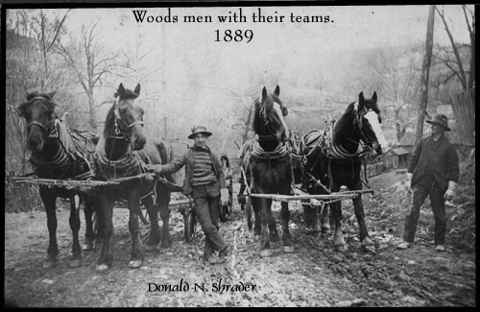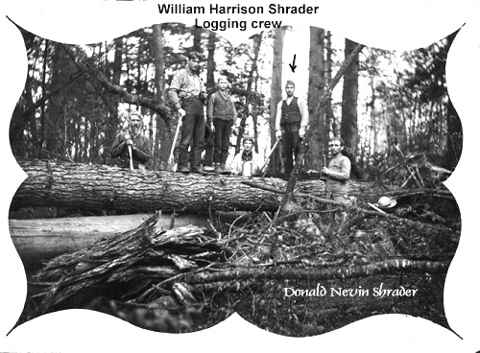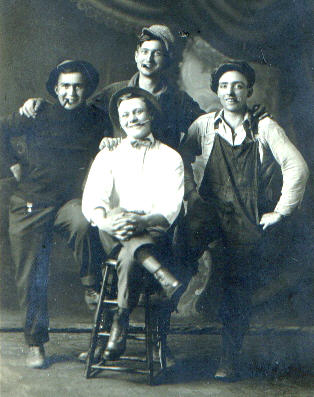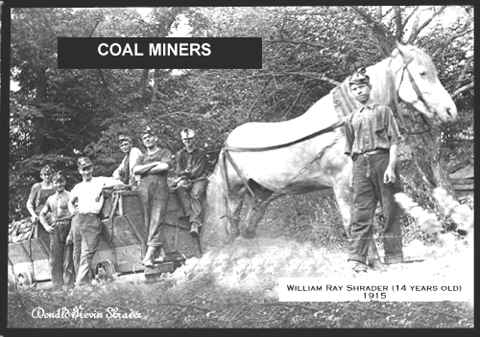 |
 |
|
The staves were shipped to Cuba and Puerto Rico, where they were assembled for use in transporting molasses and rum. The red oak was used for molasses cask, and the white oak for rum cask. As said before, only the choicest and straightest timber could be used in this industry. Tradition intimates that at the height of the industry, as many as fifty individuals of the area were employed in cutting and hauling and fashioning the staves. On the map of 1876, a shook shop is recorded as being located on Union Street at the intersection of Smith Avenue. |
 |
 |
|
The loggers would buy the timber from land owners, cut the timber and move on to other sites. |
|
|

Muncie Boys Muncie Sawmill Mt. Davis Photograph donated by Michael McKenzie |
| The Muncie Sawmill was located one mile west of the current At&t tower on Mt. Davis. The workers would often walk down Elk Lick Creek to Summit Mills on their way to Meyersdale. The man on the left is Bill Miller (great uncle of Michael McKenzie). It was on such a trip to town that Mr. Miller met his wife. |
Coal mining industry of Elk-Lick Township

|
(Salisbury, Penna. Centennial August 29, 1962) Incidentally, a saw mill was erected in this area about the same time. The first use of coal was to supersede the use of charcoal by the local blacksmiths and furnaces where iron was manufactured. Prior to the use of coal, charcoal was used by the smiths and forges. The first direct reference to the use of coal in the area was in the Glotfelty blacksmith shop. It was carried in sacks on pack horses from the mine located on the Hare Farm. The first known opening of a coal mine in Elk Lick Township was on the Fadeley Farm. The first coal tracks or land purchases for speculation or investment in the vicinity of Salisbury were made by Jacob Brown for J. Philip Roman and Norman Bruce, of Cumberland, Md. Purchases of coal lands continued for some years. Then, with the completion of the Pittsburgh & Connellsville Railroad in 1871 and of the Salisbury and Baltimore Railroad in 1876, development began on a larger scale. Prior to 1878, Salisbury was much like any agricultural community without a railroad during that period of our history. But, with the completion of the railroad and since the town was in the midst of the Elk Lick Coal Basin, operations in the "Big Vein" or Pittsburgh vein began, bringing miners and workmen from many sections of the country. The area of coal measures mined in the Elk Lick Basin around the community was about twenty square miles, with an approximate tonnage of over 300,000,000 tons of coal. We are told that when the coal industry was at its peak, the mines in the Elk Lick Basin employed from 900 to 1000 miners. The town itself grew slowly as Salisbury remained the trading center. Over the years, as the mining centers have disappeared, as have some of the mining villages, Salisbury has continued to grow, continually adjusting itself to the industrial and economic changes over the years. |